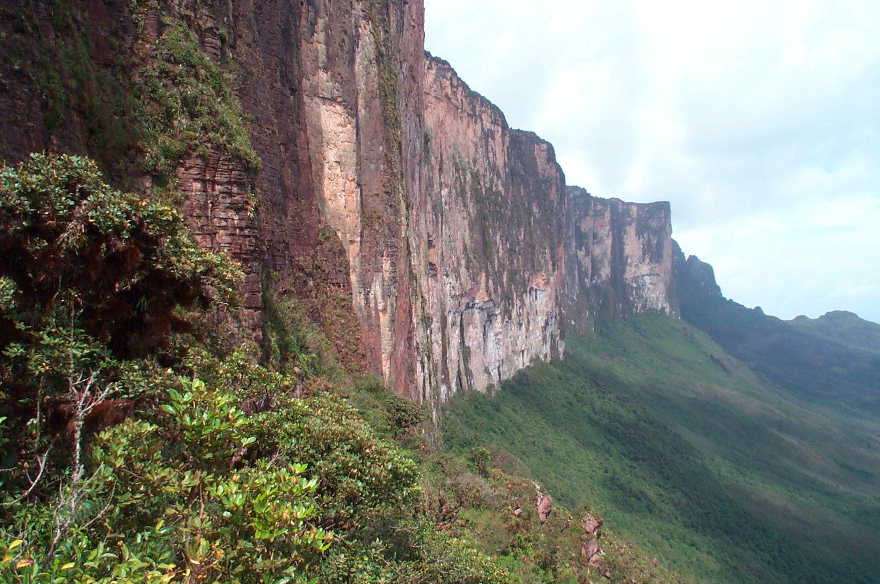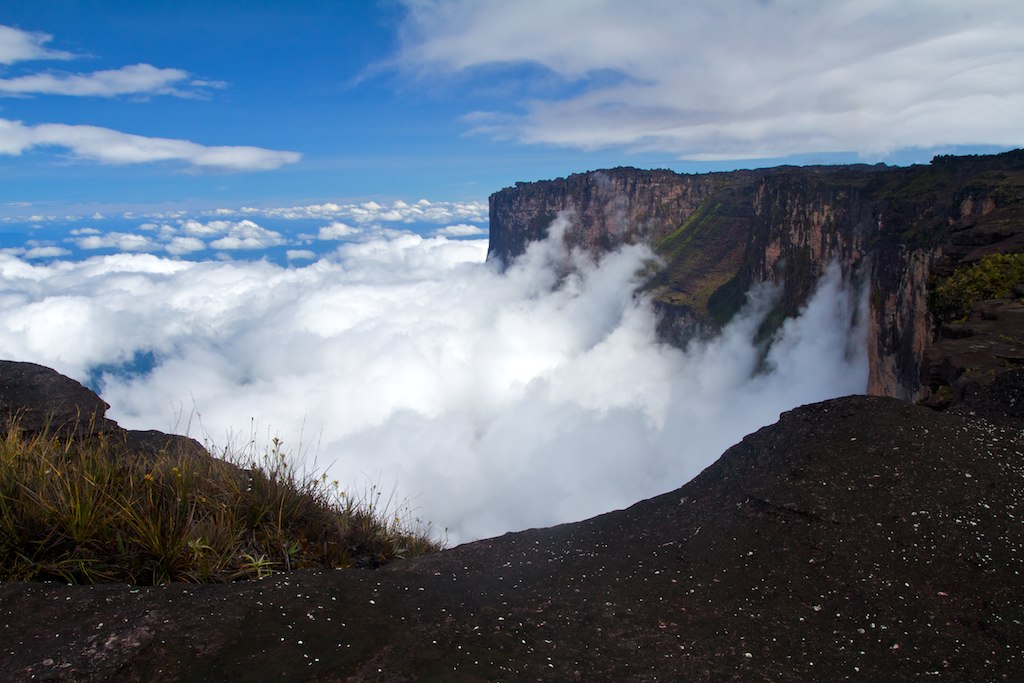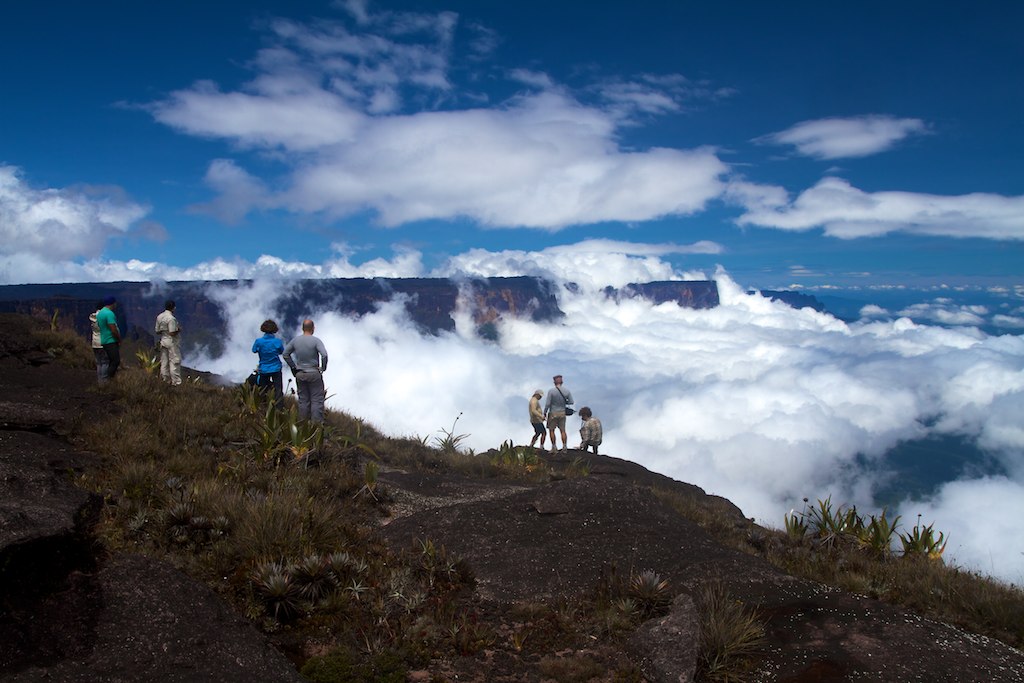


While Paradise Falls is fictional, a similar mountain really does exist in South America called Mount Roraima that juts straight out of Earth on the borders of Venezuela, Brazil, and Guyana. Nicknamed the Floating Islandl, it’s so unique, scientists are still trying to understand its ecosystem.
Besides their other-worldly appearance, tepuis like Mount Roraima form differently from traditional mountains - most of which are the result of two continental plates simply smashing together.
Instead, researchers think tepuis started forming when sand settled and became rock at the bottom of the ancient oceans, some 2 billion years ago. To put that into perspective, Mount Everest only formed about 60 million years ago, and Earth itself is roughly 4.5 billion years old. So yeah, these things are ancient.
After this sandstone formed, the oceans receded and erosion took over, chiselling down the areas around the tepuis and creating a giant shelf made of super-ancient rock that looks completely out of place, given its surroundings.
While their age is mind-boggling in itself, one of the most tantalising things about Mount Roraima and other tepuis is that researchers are just now starting to understand the lifeforms that live on top of and inside them.
This mystery revolves around the fact that we know many creatures call the tops of these unique geological formations home, but how the heck did they get there?
One of the most talked-about studies on the issue was a 2012 paper that analysed the DNA of four different tree frog species from separate tepuis in South America.
The goal was to see if the frogs, which generally stick to one area for their entire lives, had common ancestors that dated back over 70 million years - when researchers think the tops of the tepuis became inaccessible by traditional means.
If the species had a common ancestor from more than 70 million years ago, it stands to reason that the frogs lived and evolved on the top of their individual tepuis. If not, the frogs likely travelled up to the tepui somehow.
The team found that all of the frogs had a common ancestor that lived about 5.3 million years ago, suggesting that there was a way for creatures to migrate to and from the mountain tops on their own.
Source